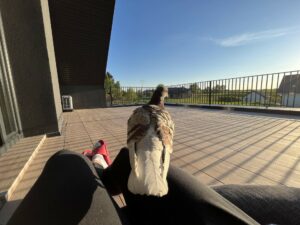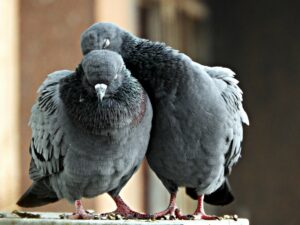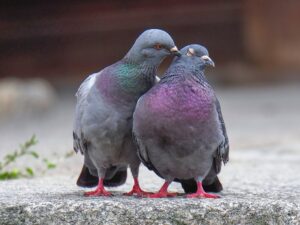Learn how pigeons reproduce.
In the fascinating world of pigeons, one aspect that always intrigues people is how they reproduce. The process is a beautiful and intricate dance of courtship, nesting, and nurturing that each pigeon pair partakes in.
As a pet pigeon owner, understanding the reproductive behaviors of these birds is important for many reasons. It helps us appreciate their natural behavior, manage their living environment better, and even handle unexpected little squabs!
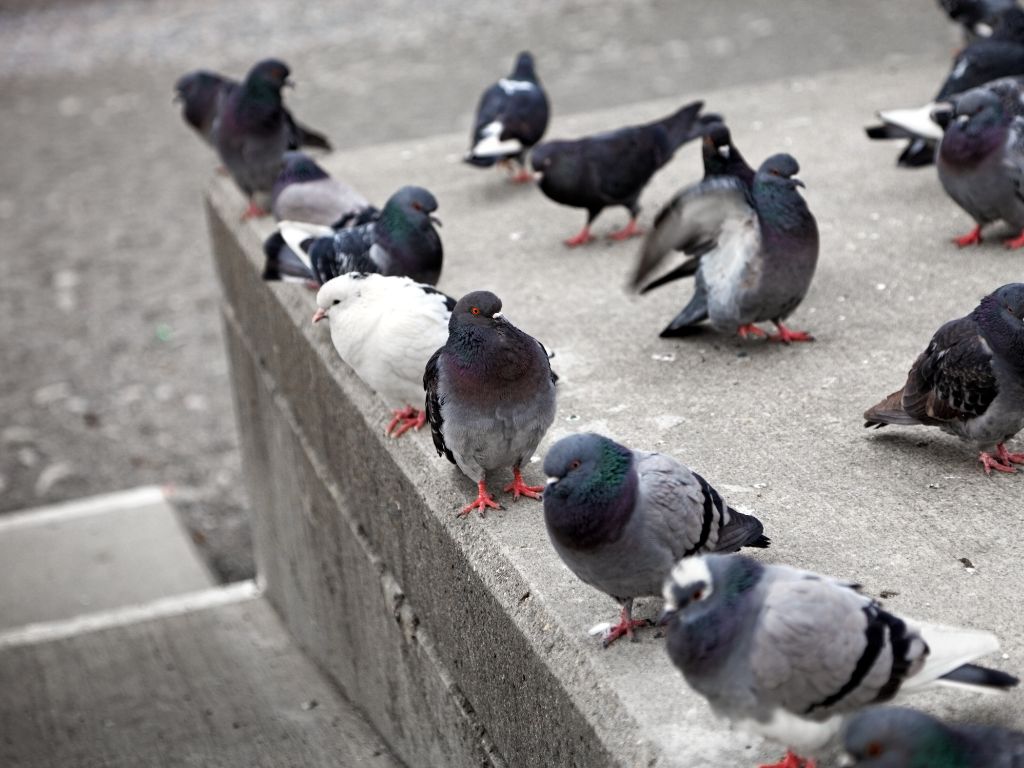
How do pigeons reproduce? Table of contents
How do pigeons reproduce? TL;DR
Pigeon Reproduction: Pigeon Courtship and Mating Rituals
The world of birds is full of fascinating courtship and mating rituals, and pigeons are no exception. Despite being a common sight in cities around the world, the intricacies of their mating rituals often go unnoticed. Let’s take a closer look at the roles both male and female pigeons play in these behaviors.
Male Courtship Behaviors
The courtship process for pigeons typically starts with the males exhibiting a series of behaviors to attract potential mates:
- Bow-cooing: The male pigeon performs a display known as “bow-cooing”. He lowers his head, puffs out his chest, and emits a soft, rhythmic cooing sound. This not only gets the attention of the female but also showcases his vigor and health.
- Puffing and Preening: The male may puff up his feathers and preen himself to look more attractive. This behavior signals to the female that he is in good health and is a suitable mate.
- Billing: Once he’s gotten the attention of a female, the male pigeon may engage in “billing”. This involves him placing his beak inside the female’s beak, similar to the way they might feed each other. This intimate behavior serves to strengthen the bond between them.
- Nest Showing: The male may also display his suitability as a mate by showing the female a potential nest site. This demonstrates his ability to provide a safe and suitable location for her to lay eggs.
Female Responses and Mating Acceptance
In response to these courtship displays, the female pigeon will also exhibit specific behaviors:
- Observation: Initially, the female will observe the male’s courtship displays from a distance. She’s assessing his health, vitality, and suitability as a mate.
- Reciprocation: If the female is interested in the male, she may start reciprocating his actions. This could involve her returning his coos, participating in mutual preening, and accepting his billing attempts.
- Nest Acceptance: If the male shows her a nest site, the female may inspect the location. If it’s suitable, she will accept it by starting to spend time there and helping with the nest-building process.
- Mating: Once she has fully accepted the male, the female will signal her readiness to mate. The two birds will mate, often repeatedly over several days, to ensure fertilization.
The male and female will then work together to build their nest, incubate their eggs, and raise their young. These intricate courtship rituals and their subsequent partnership in rearing their young underscore the fascinating, complex behaviors that pigeons, like many bird species, exhibit in their mating processes.
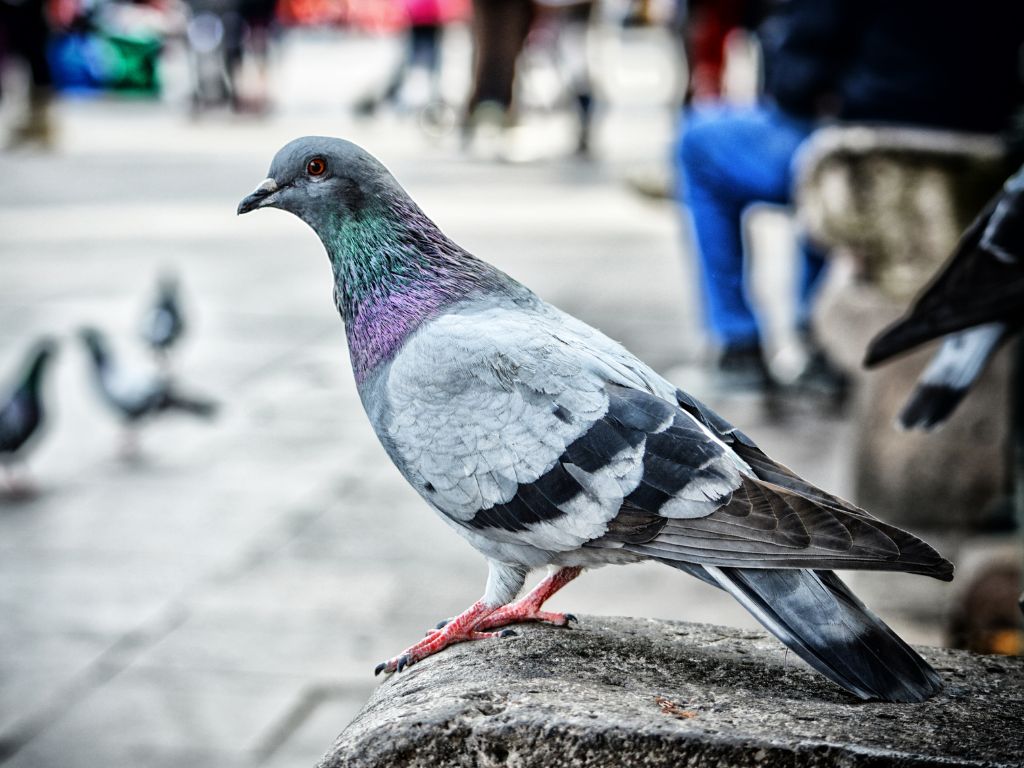
How do pigeons reproduce? Nesting and Egg Laying
Nesting and egg-laying are crucial aspects of the life cycle of pigeons. Both male and female pigeons take part in the nest-building process, while the female pigeon primarily handles the egg-laying task. Let’s delve deeper into the dynamics of these two aspects:
Nest Building Process
The nest-building process in pigeons is a joint endeavor that involves both the male and female pigeon:
- Site Selection: The male pigeon generally initiates the process by selecting a suitable site for the nest. This could be on a ledge, in a tree, or even in an artificial structure in urban areas. The site is typically chosen for its safety from predators and exposure to the elements.
- Material Collection: The male pigeon is primarily responsible for gathering nesting materials such as twigs, leaves, and grasses. He brings these to the nest site, where the female will arrange them.
- Nest Construction: The female pigeon is largely responsible for the actual construction of the nest. She arranges the materials brought by the male into a circular structure, layering and interweaving the materials for stability. Pigeon nests are generally quite simple and can sometimes appear somewhat haphazard or flimsy.
- Preparation for Egg Laying: Once the nest is completed, the female pigeon will settle into the nest, ready for egg-laying. The male will continue to guard the nest and occasionally bring additional nesting materials.
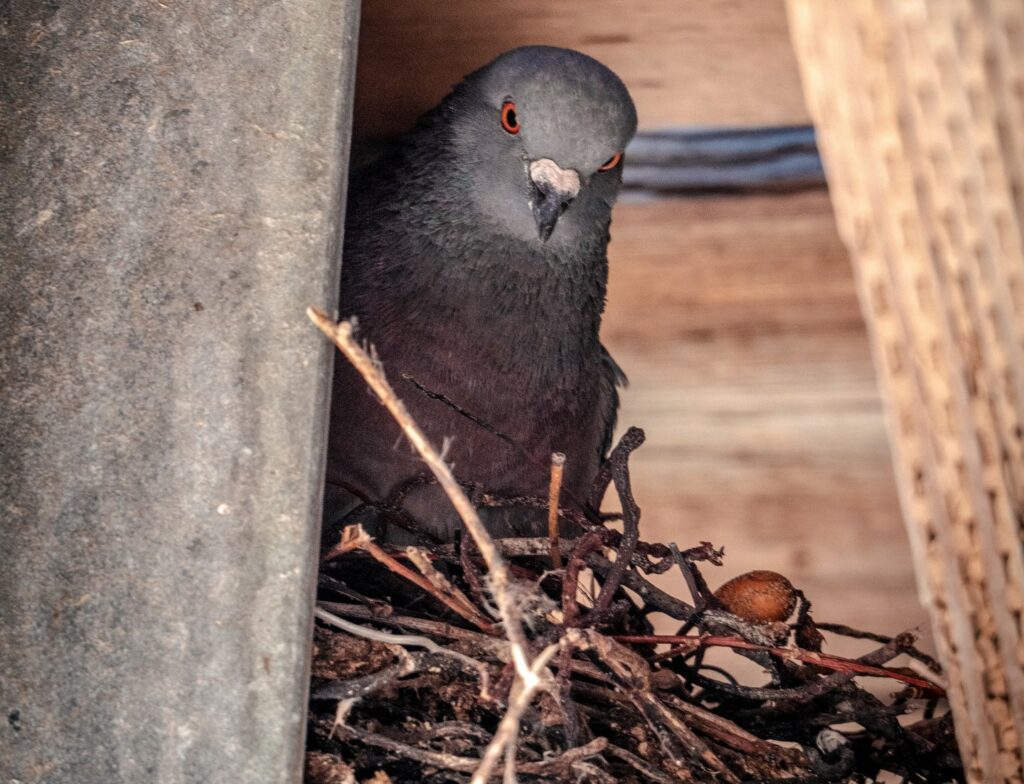
Egg-laying Timeline and Characteristics
The egg-laying process in pigeons is characterized by a predictable timeline and certain distinctive characteristics:
- Number of Eggs: A female pigeon typically lays two eggs per breeding cycle. The eggs are laid one to two days apart.
- Appearance of Eggs: Pigeon eggs are small and oval-shaped with a smooth, glossy surface. They are usually plain white in color.
- Incubation Period: Once both eggs are laid, both the male and female pigeon share the incubation duties. This period lasts for about 18 days.
- Hatching: After the incubation period, the eggs will hatch over a day or two. Newly hatched pigeons, known as squabs, are altricial, meaning they are blind, featherless, and completely dependent on their parents for food and warmth.
- Fledging: The squabs grow quickly and are usually ready to leave the nest about a month after hatching. However, the parents continue to feed and care for them until they are able to fend for themselves.
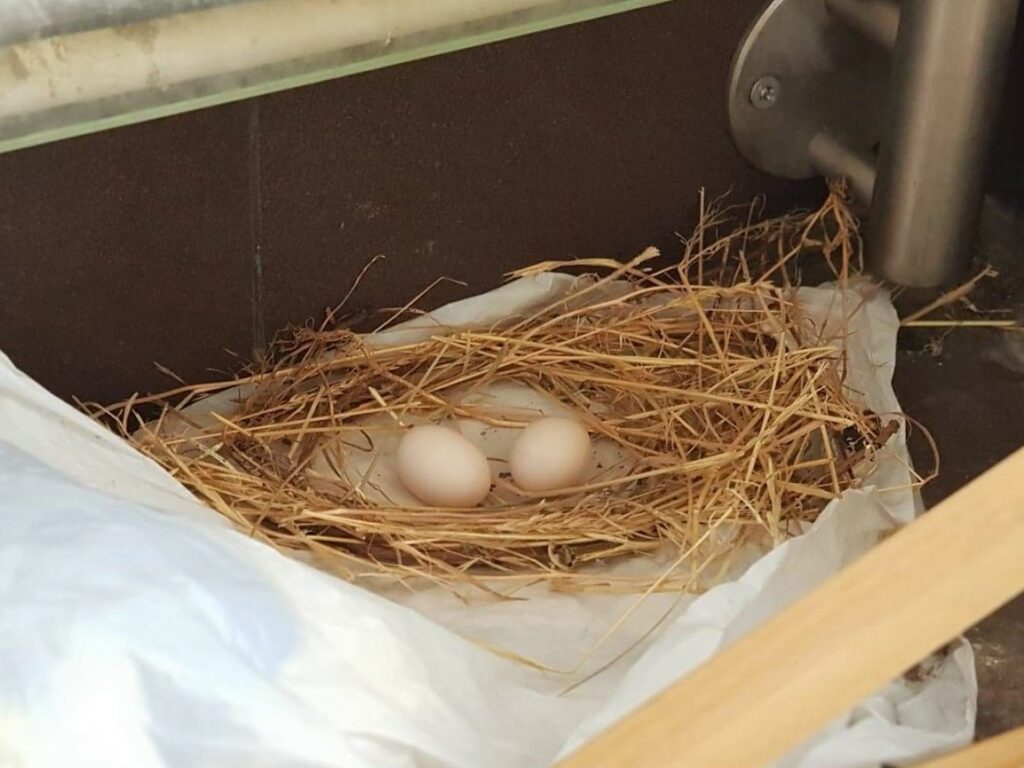
Pigeon nesting and egg-laying behaviors offer a glimpse into the interesting reproductive strategies of these birds, emphasizing their adaptability and cooperative breeding habits.
How do pigeons reproduce? Incubation and Hatching
Following the egg-laying process, pigeons transition into the incubation and hatching stage. This is a critical period in the development of pigeon offspring, requiring the devoted care and attention of both parents.
Incubation Period and Process
- Duration: The incubation period for pigeon eggs typically lasts for about 18 days, although it may vary slightly depending on various factors, such as environmental conditions.
- Shared Responsibility: In pigeons, both the male and the female share the responsibility of incubation. The female usually incubates the eggs overnight and during part of the day, while the male takes over for the rest of the day. This ensures that the eggs are constantly kept warm and protected.
- Incubation Process: The adult pigeons keep the eggs warm by sitting on them and tucking them underneath their body, using the brood patch (an area with fewer feathers and increased blood flow) to transfer heat.
Hatching: Process and Timeline
- Pipping: The hatching process begins with the young bird inside the egg using a small, sharp, egg-tooth on the top of its beak to break through the shell. This first crack or hole is known as the “pip”.
- Breaking Free: Once the pip is made, the squab will continue to chip away at the shell, gradually creating a larger opening. It may take a day or two for the young bird to fully break free from the egg.
- Time Between Hatchings: If there are two eggs, the second usually hatches a day or two after the first due to the staggered laying.
Pigeon Squabs: Growth and Development
Once the eggs hatch, the pigeon squabs go through a rapid growth and development phase. The care and feeding provided by the parents play a pivotal role in this process.
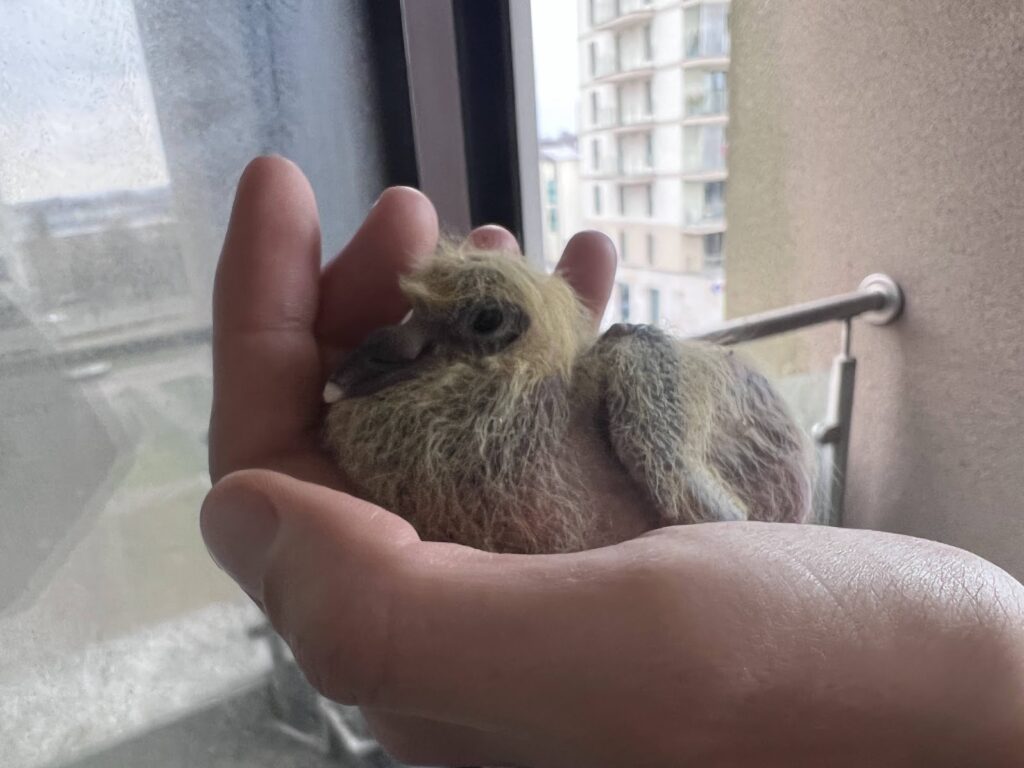
Stages of Squab Development
- Hatchlings: At hatching, squabs are blind, naked, and entirely dependent on their parents. They can do little more than open their mouths for food.
- First Week: During the first week, the squabs start to develop their first feathers, known as “pin feathers”. They are still blind and completely dependent on their parents for feeding and warmth.
- Second Week: By the end of the second week, squabs begin to open their eyes and their feathers continue to grow and develop. They become more active but still rely on their parents for food.
- Third Week: During the third week, squabs grow rapidly. Their feathers continue to mature, and they start to look more like adult pigeons.
- Fourth Week and Beyond: After about four weeks, the squabs are usually ready to leave the nest. They begin to try short flights and start learning to forage for food. However, they still rely on their parents for feeding for some time after leaving the nest.
Check this for more information: What Does A Baby Pigeon Look Like?
Parental Care and Feeding
- Feeding: For the first week of their life, squabs are fed a nutrient-rich substance known as “crop milk” or “pigeon milk“, produced by both male and female parents. After the first week, the parents gradually introduce seeds and other food into their diet.
- Care: Along with feeding, the adult pigeons provide constant care to the squabs. They keep them warm, protect them from predators, and maintain the cleanliness of the nest.
The transition from incubation to hatching, and the subsequent growth and development of pigeon squabs, demonstrates the complexity and diligence inherent in the breeding habits of pigeons.
Independence and the Start of Sexual Maturity
As pigeon squabs grow and mature, they reach a stage where they become independent and begin to display signs of sexual maturity. This is a crucial transition stage, marking the beginning of their adult lives.
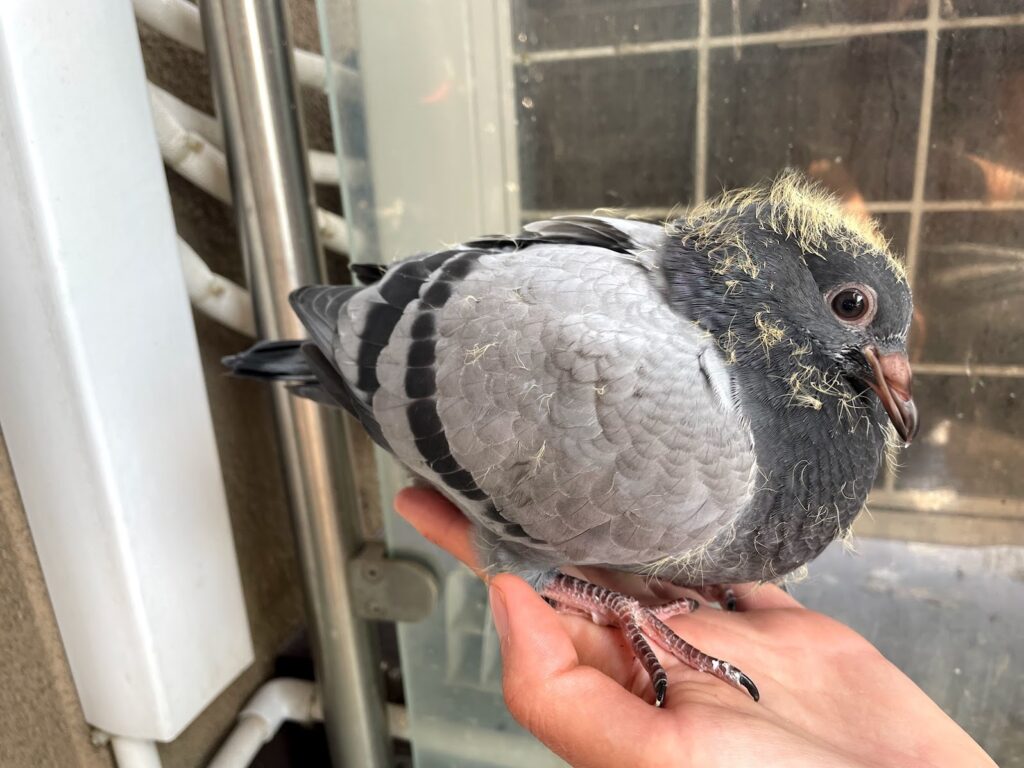
Timeline for Squab Independence
- Fledging: Around four weeks after hatching, pigeon squabs, now nearly fully feathered and resembling adult pigeons, start to leave the nest. This process is called fledging.
- Self-Sufficiency: After fledging, the young pigeons continue to be fed by their parents for a week or two. They gradually learn to forage for food themselves, becoming fully self-sufficient around six weeks of age.
- Leaving Parental Territory: Once they’re self-sufficient, young pigeons typically leave their parents’ territory and start to explore the wider world.
Check this: What Do Baby Pigeons Eat?
Onset of Sexual Maturity and Ability to Reproduce
- Sexual Maturity: Pigeons usually reach sexual maturity between six and seven months of age. The exact timing can vary based on factors such as species, diet, and overall health.
- Signs of Maturity: Male pigeons will begin to exhibit courtship behaviors, such as bow-cooing and preening, while females will be receptive to these behaviors.
- Ability to Reproduce: Once they reach sexual maturity, pigeons are capable of reproducing and will start to look for mates and suitable nesting sites.
Unique Aspects of Pigeon Reproduction
Pigeon reproduction stands out in several ways due to unique behaviors and adaptations, including their monogamy, their ability to produce “milk”, and their success in urban environments.
Pigeons’ Monogamy and “Milk” Production
- Monogamy: Pigeons are monogamous, meaning they pair for life. Once a male and female form a pair bond, they will stay together until one of them dies, reproducing exclusively with each other.
- “Milk” Production: Both male and female pigeons produce a nutrient-rich substance known as “crop milk” or “pigeon milk”. This is not true milk (a mammalian secretion), but rather a substance regurgitated from their crops. It is high in protein and fat, providing a perfect initial food for the newborn squabs.
Adaptations for Urban Life
- Nest Site Selection: Pigeons have adapted exceptionally well to urban life, able to nest on buildings and other man-made structures. This adaptability has allowed them to thrive in cities around the world.
- Scavenging: In cities, pigeons have become efficient scavengers, able to find food in a variety of places, including parks, streets, and garbage bins.
- Multiple Breeding Cycles: Unlike many birds, pigeons can breed year-round if food is plentiful, which is often the case in urban environments. This ability to have multiple breeding cycles has contributed to their proliferation in cities worldwide.
These unique aspects of pigeon reproduction highlight the resilience and adaptability of these birds, allowing them to thrive in both wild and urban environments.
Learn more about pigeons:
Final thoughts on pigeon reproduction
Wrapping up, we’ve journeyed through the intriguing world of pigeon reproduction, from courtship rituals to the growth of squabs. As pigeon owners or bird enthusiasts, understanding this process is crucial. It helps us provide better care for our pet pigeons and makes us more aware of their natural behaviors.
Moreover, this knowledge plays a significant role in the conservation and rehabilitation of these remarkable birds. In essence, the more we understand about pigeon reproduction, the better we can appreciate and support these feathered companions.

